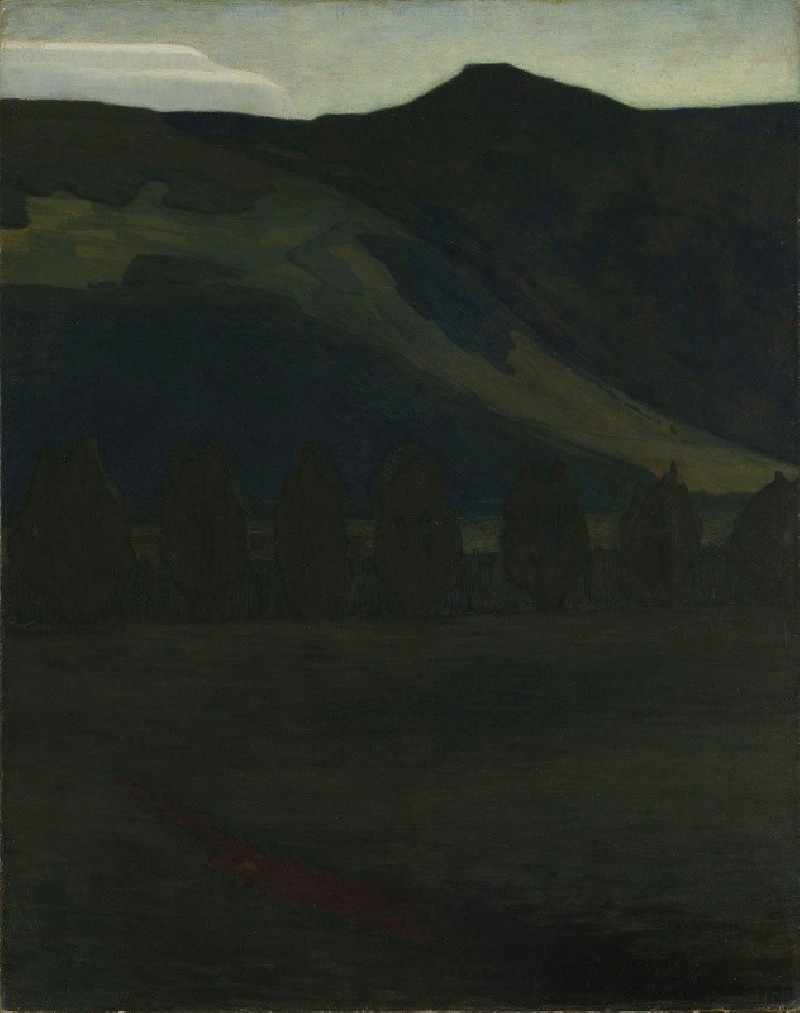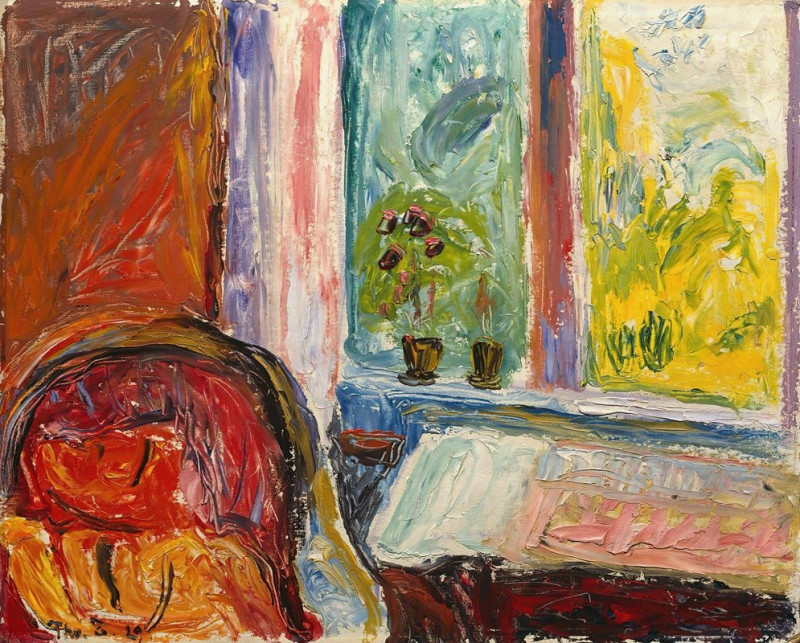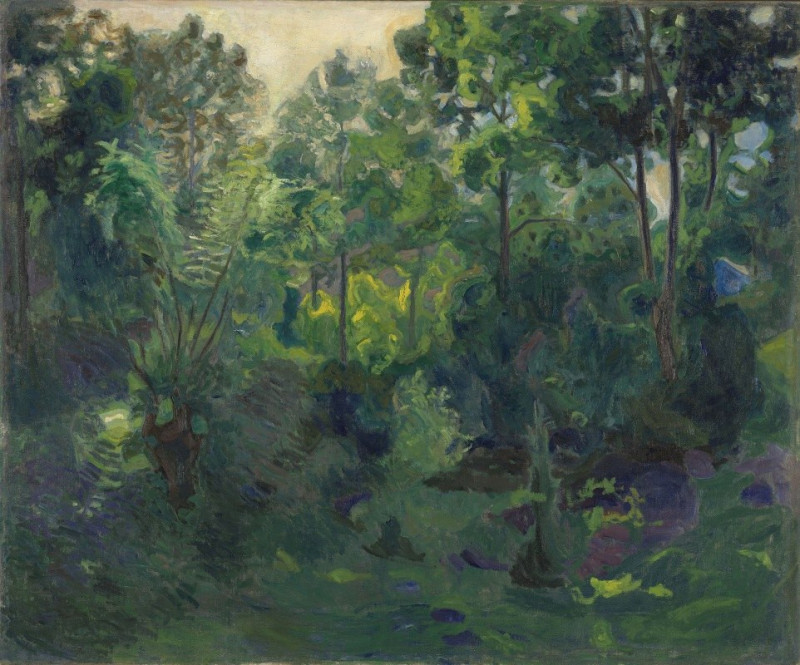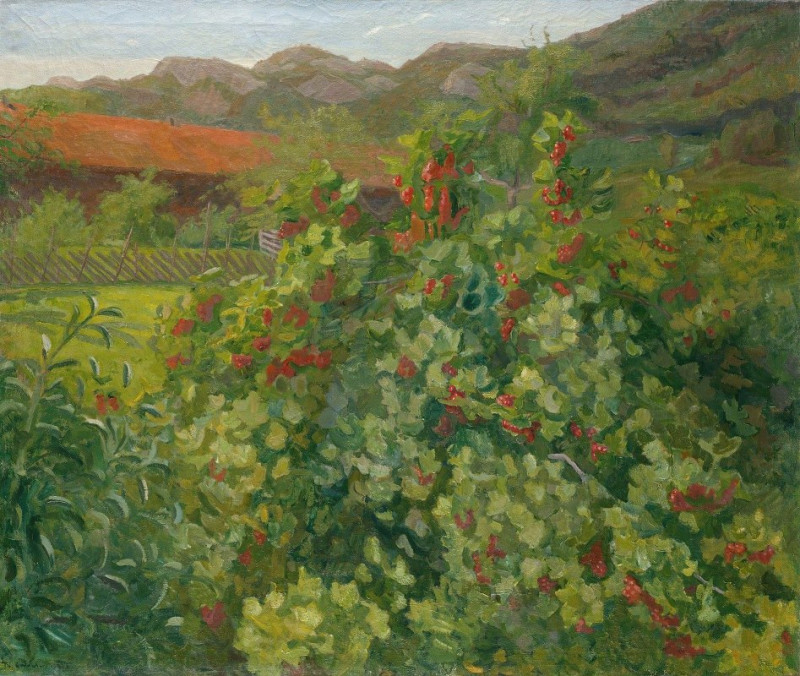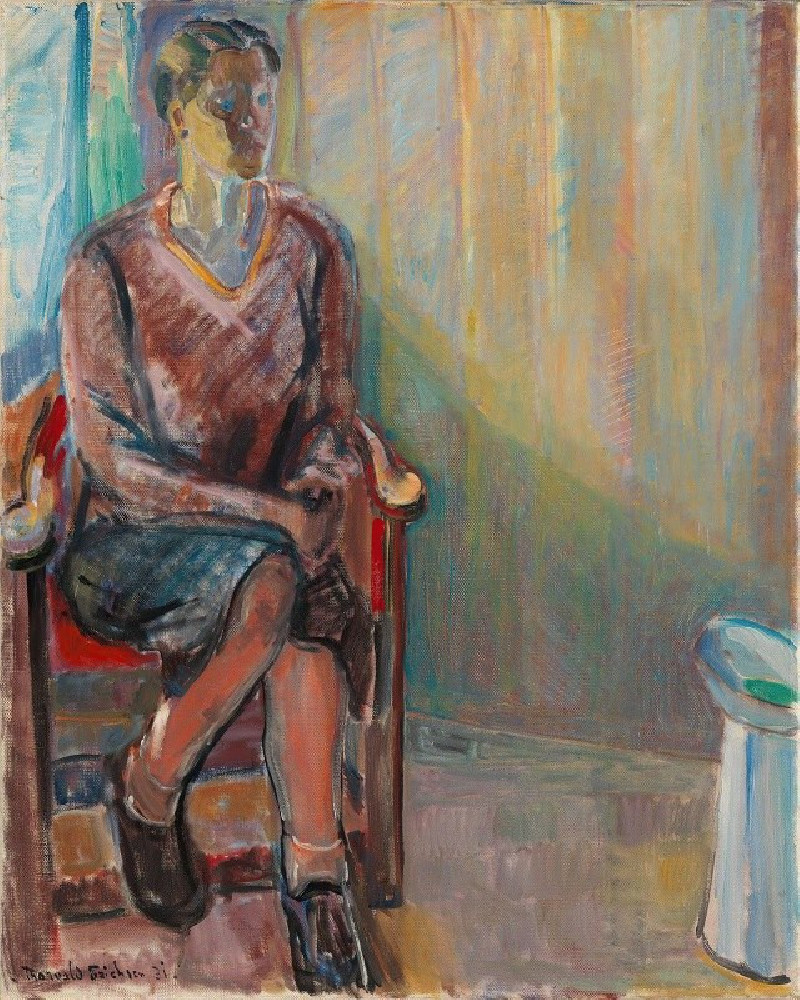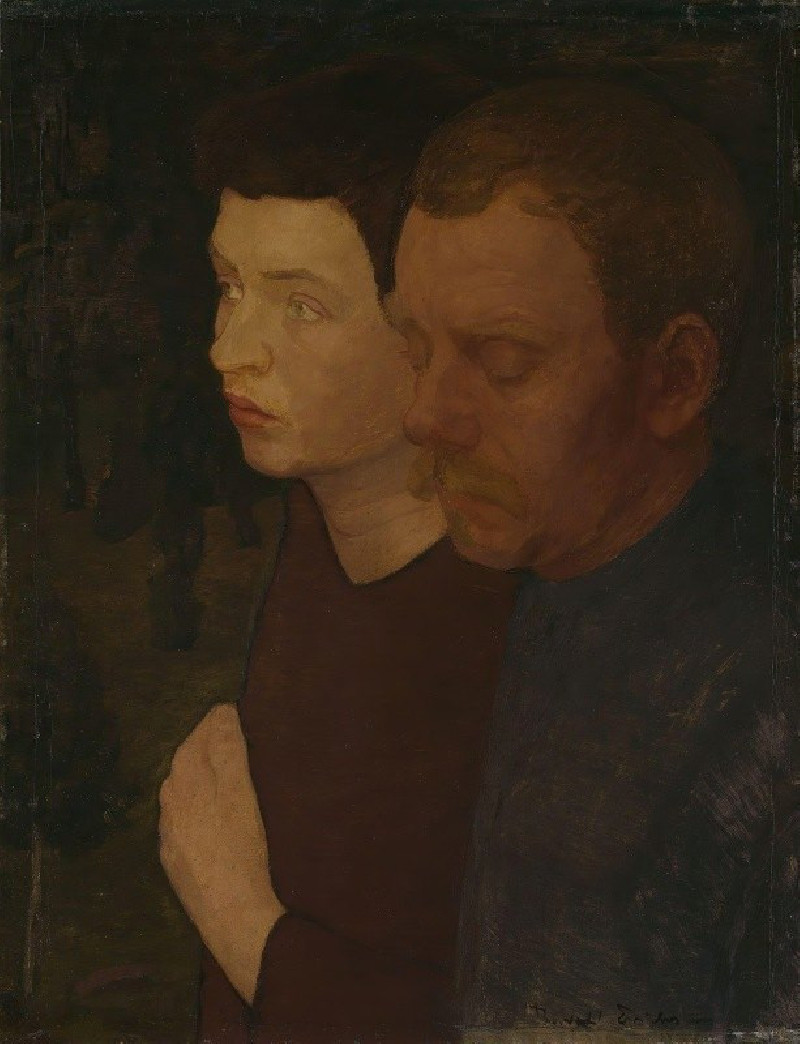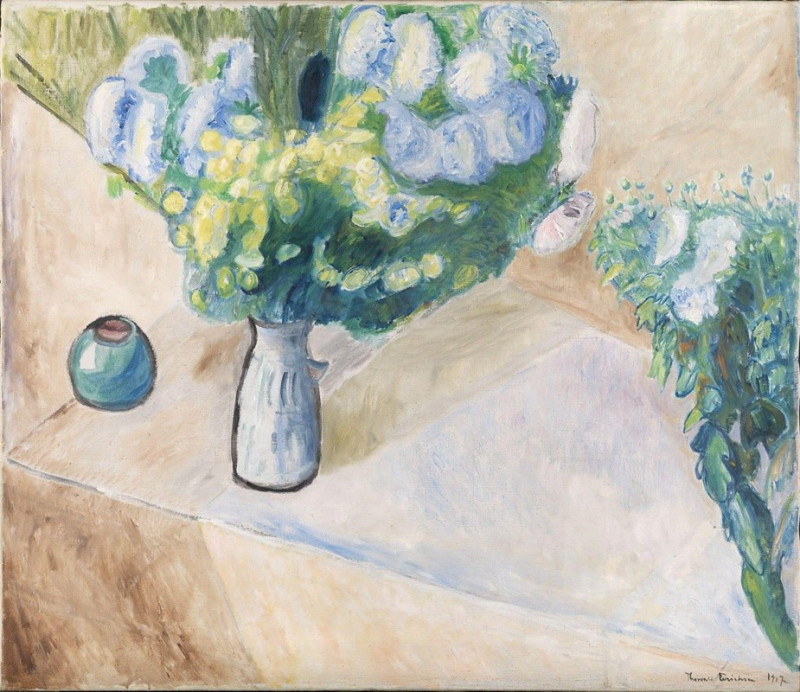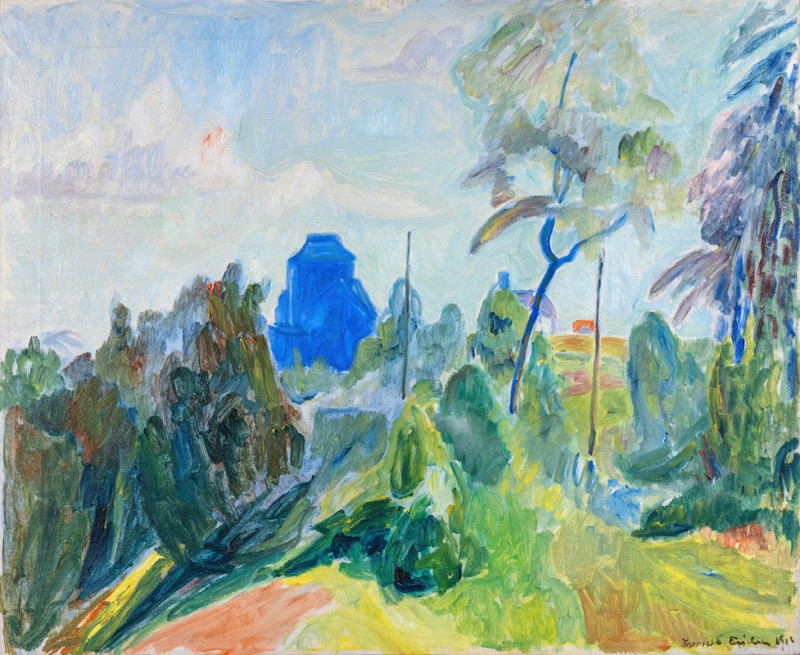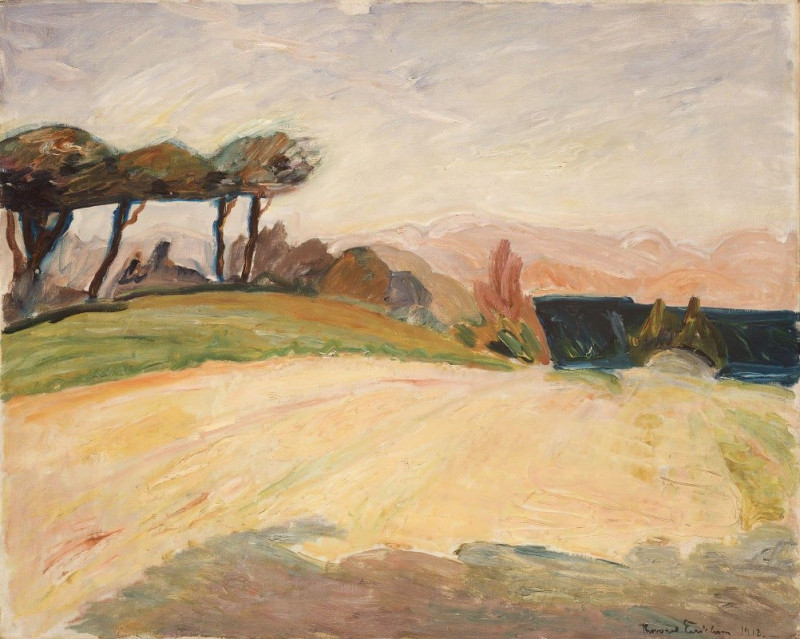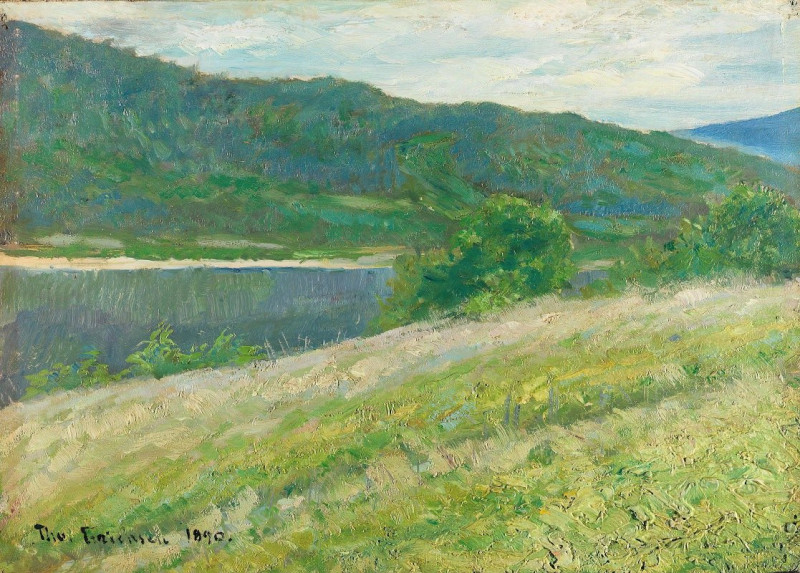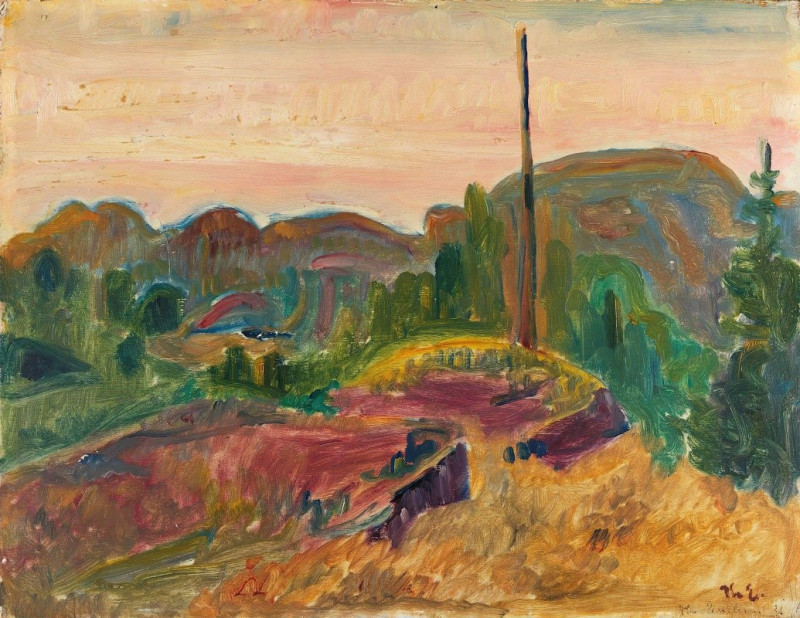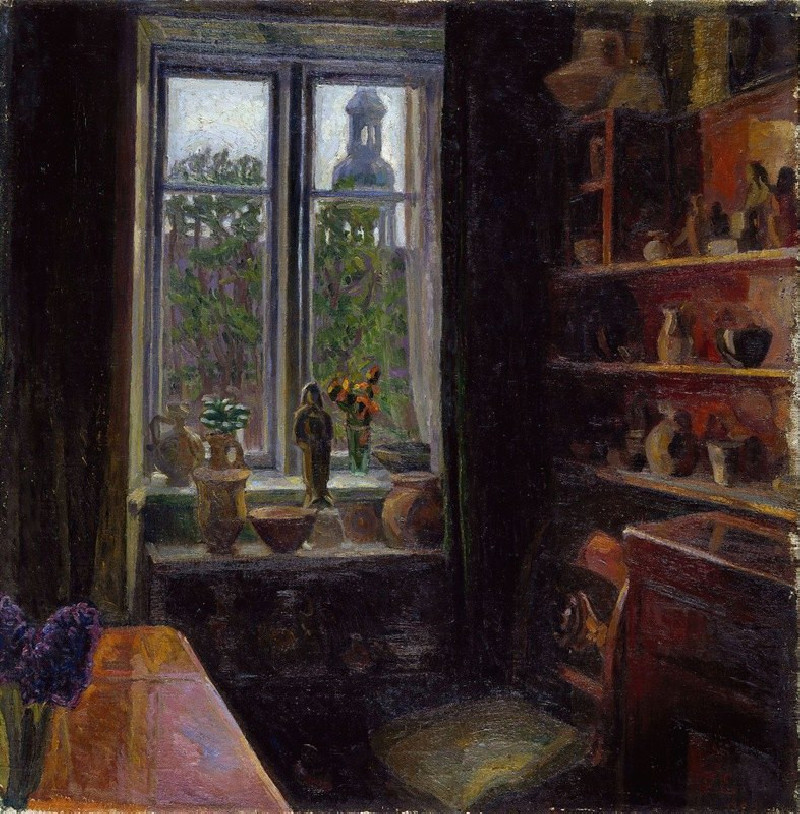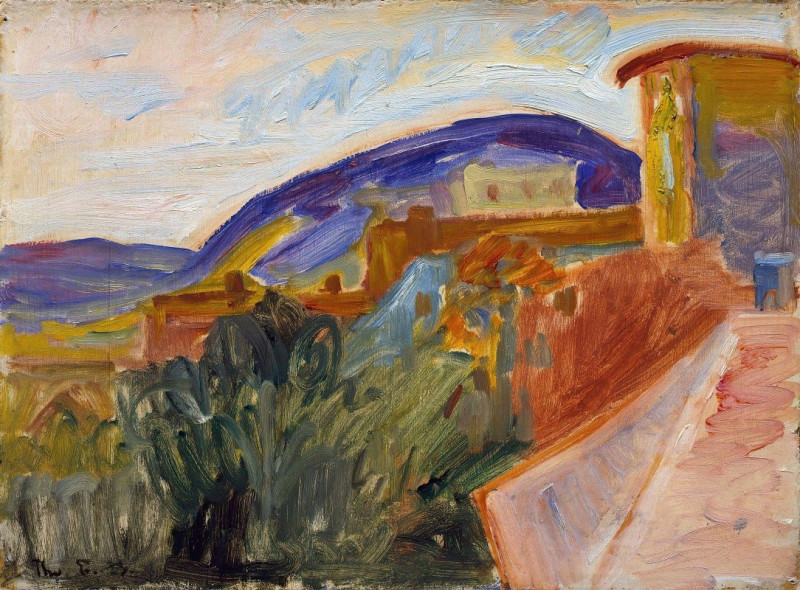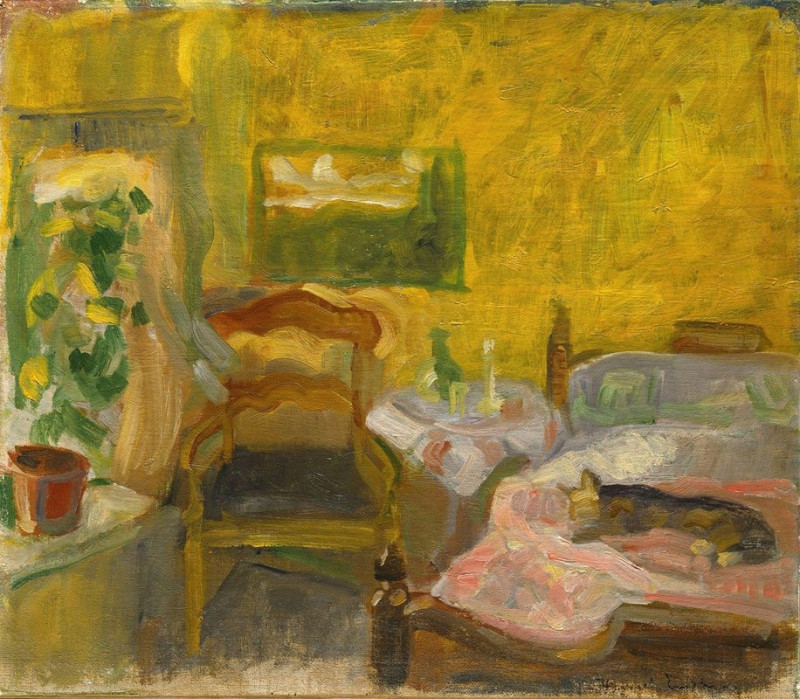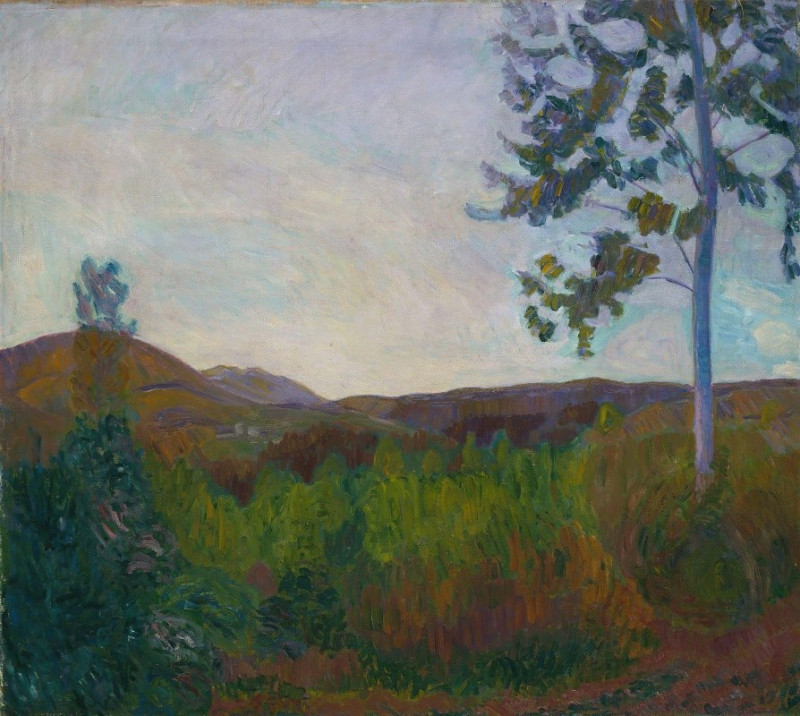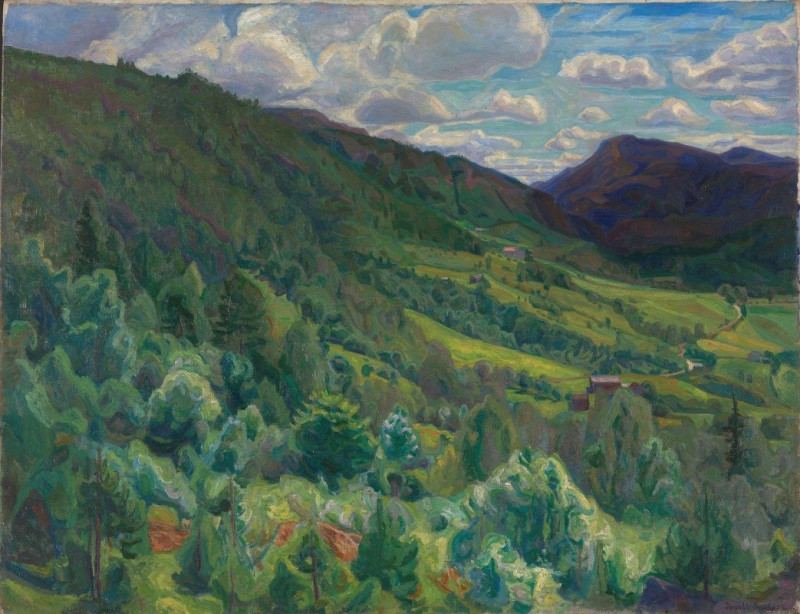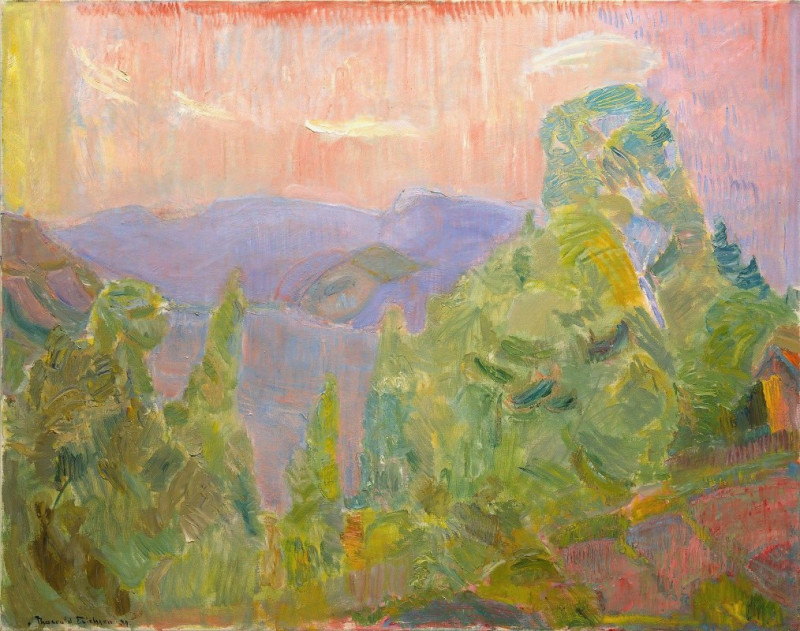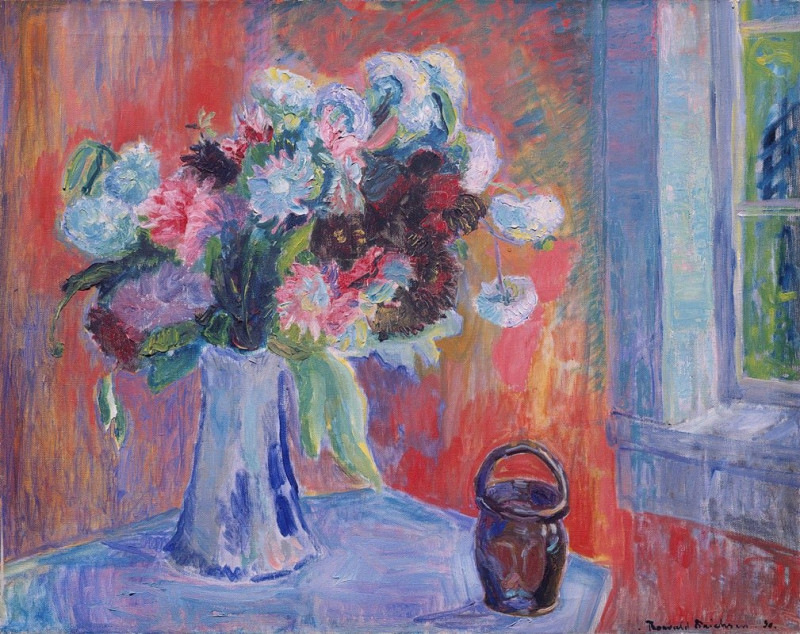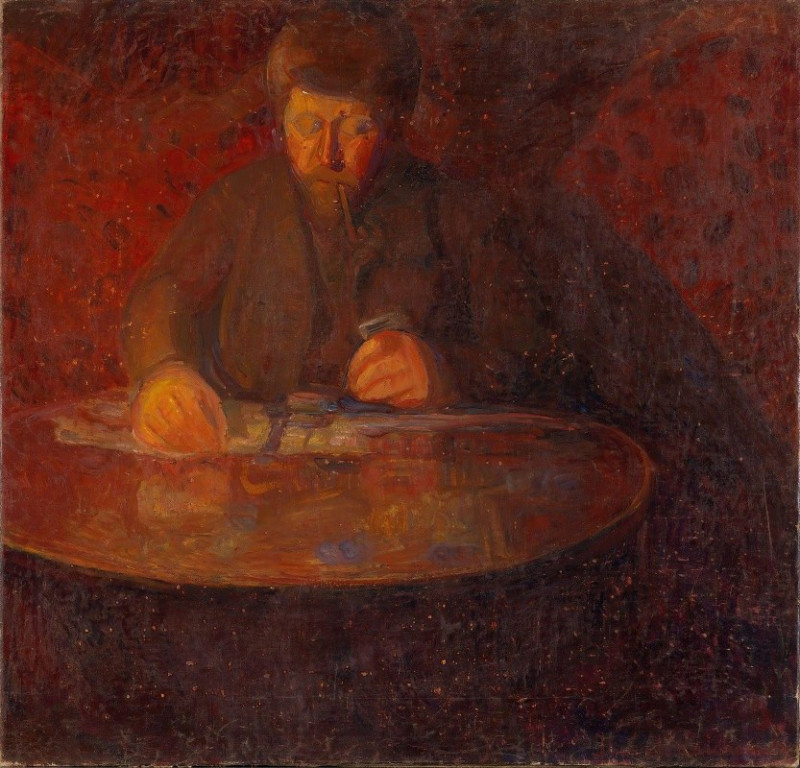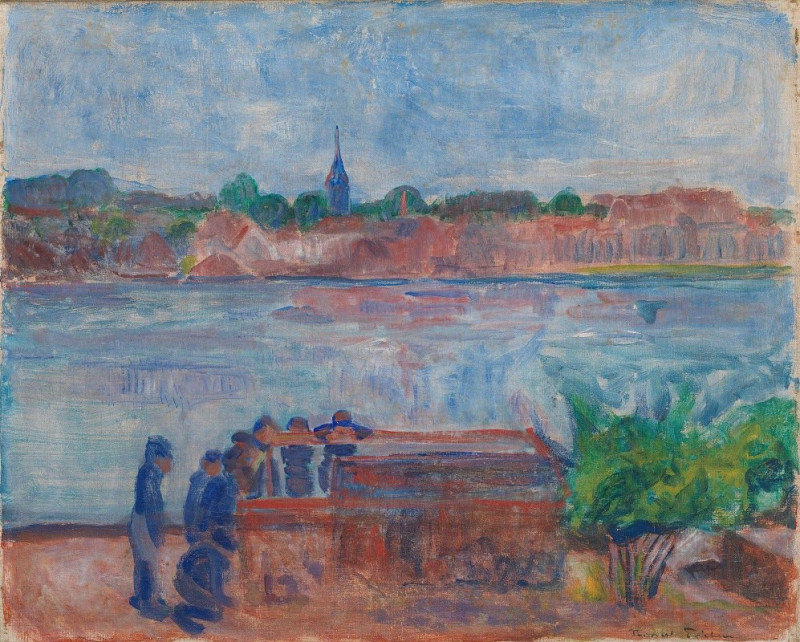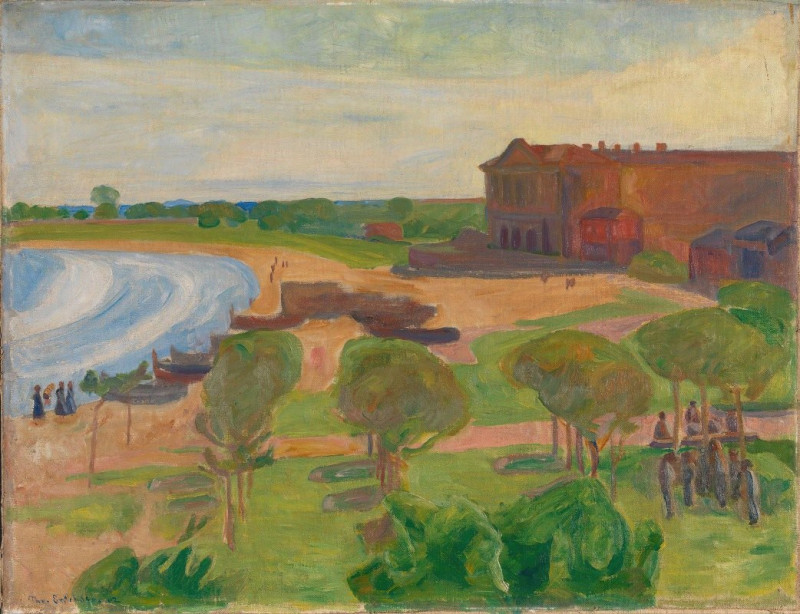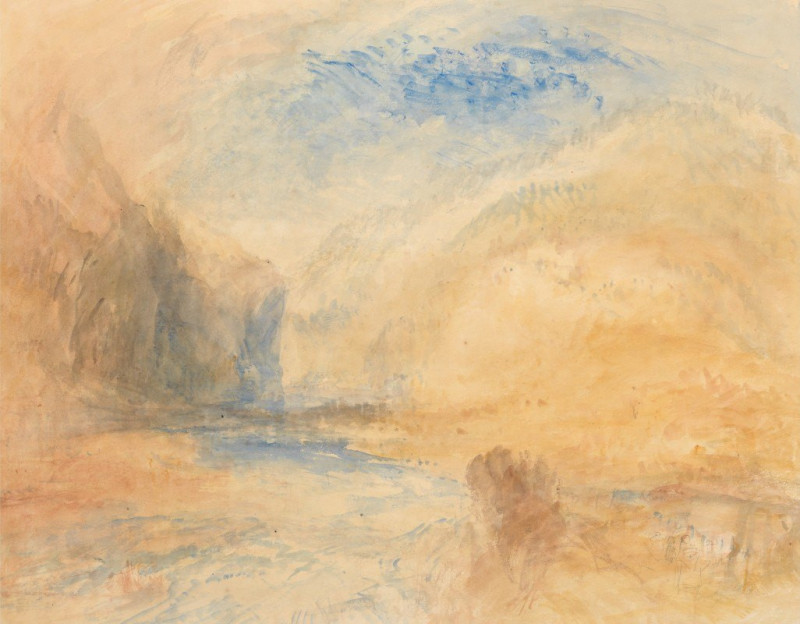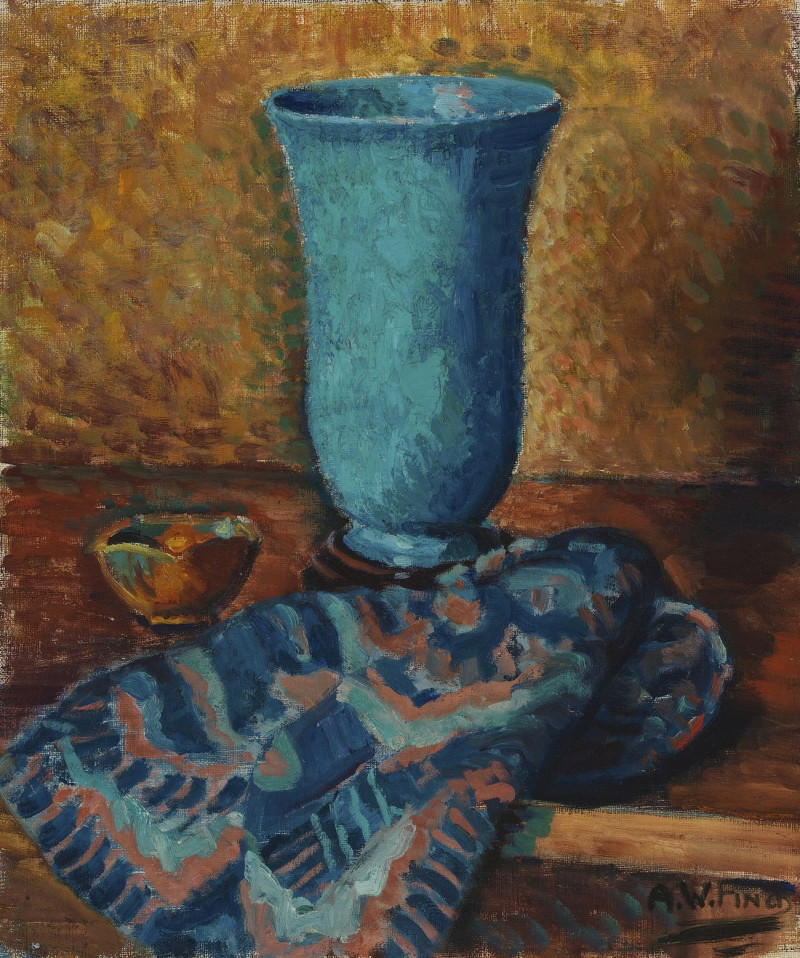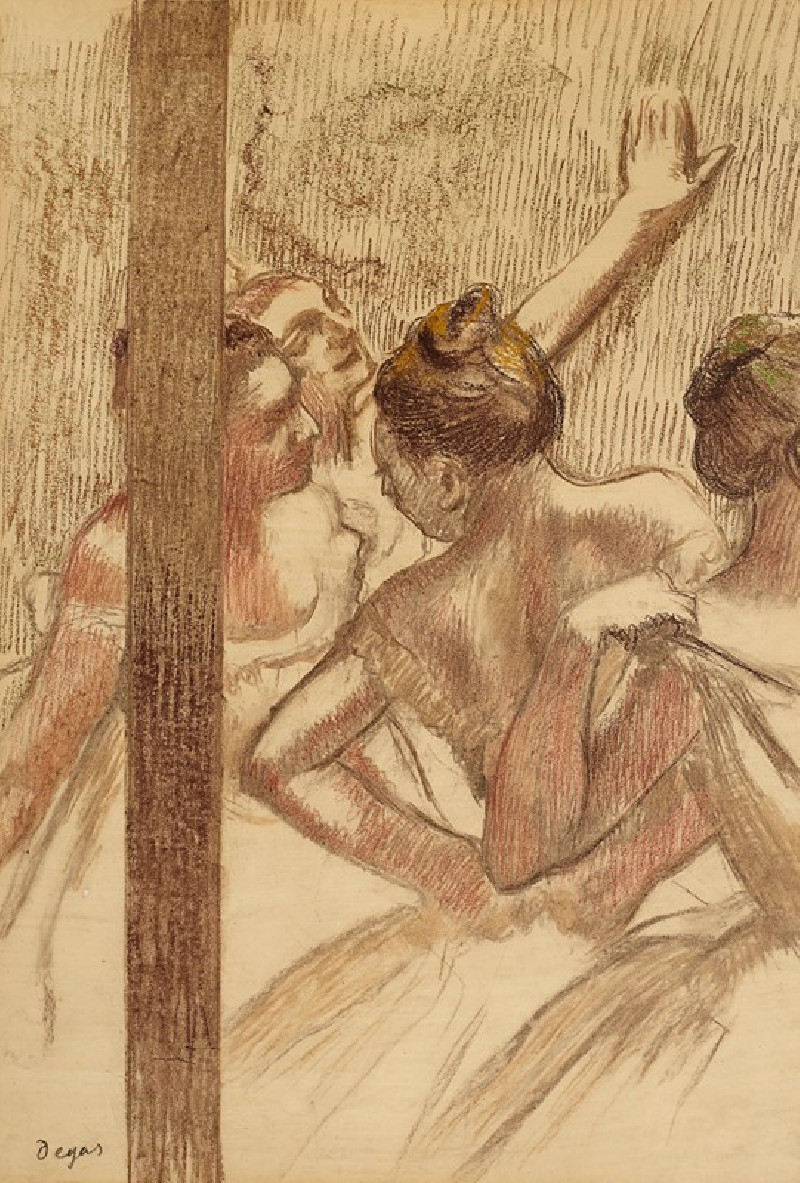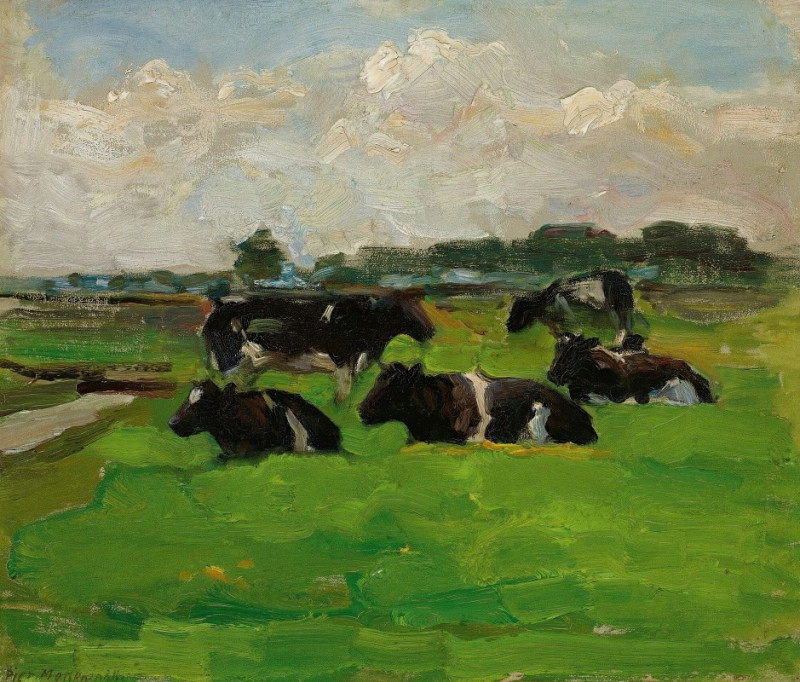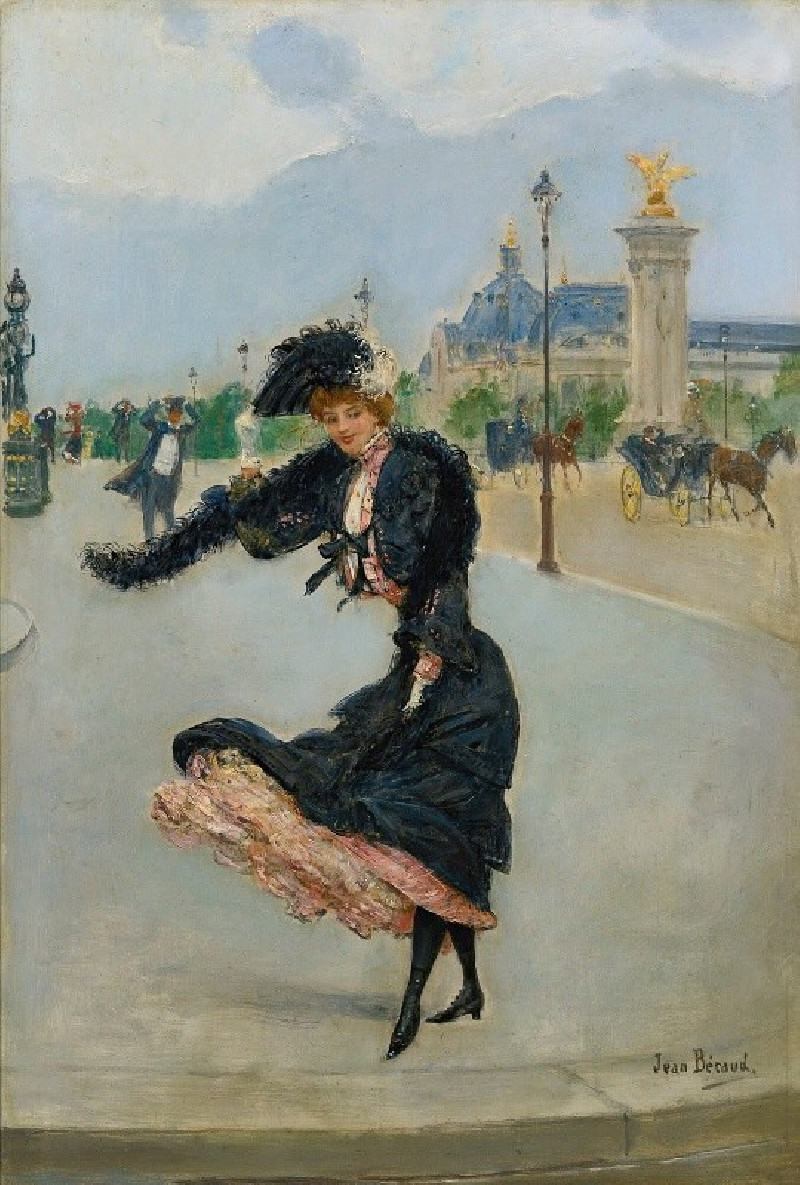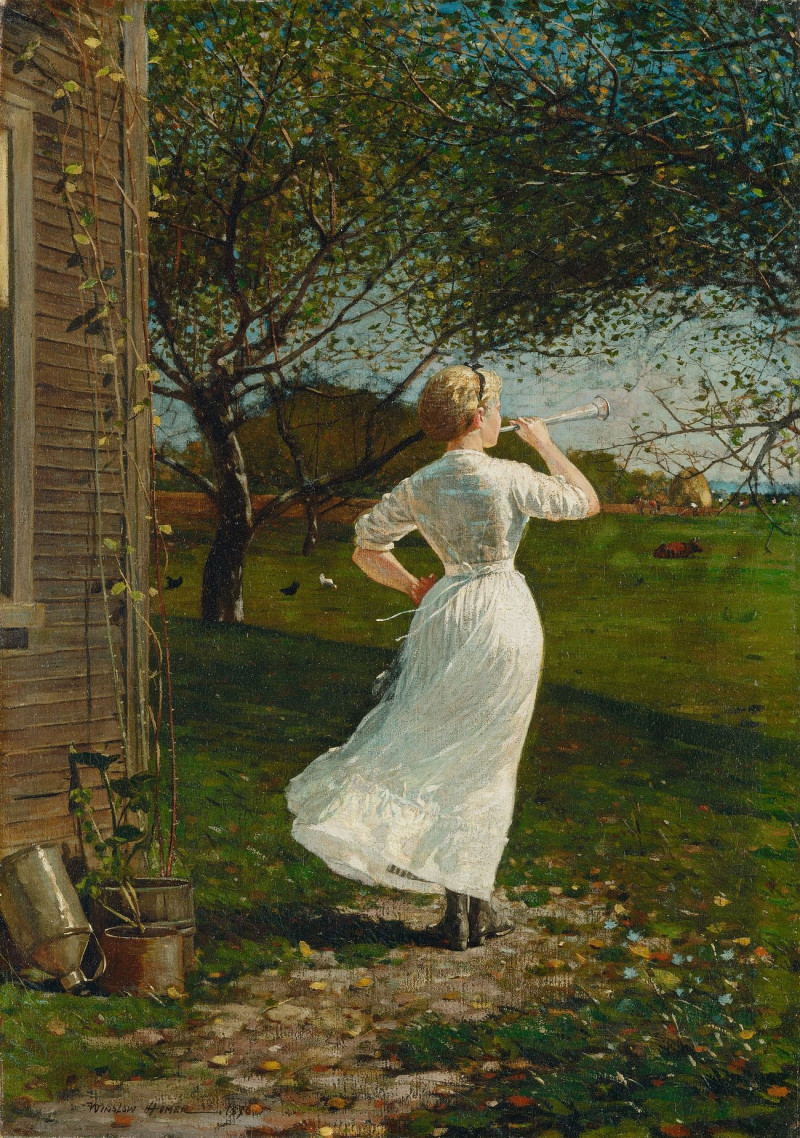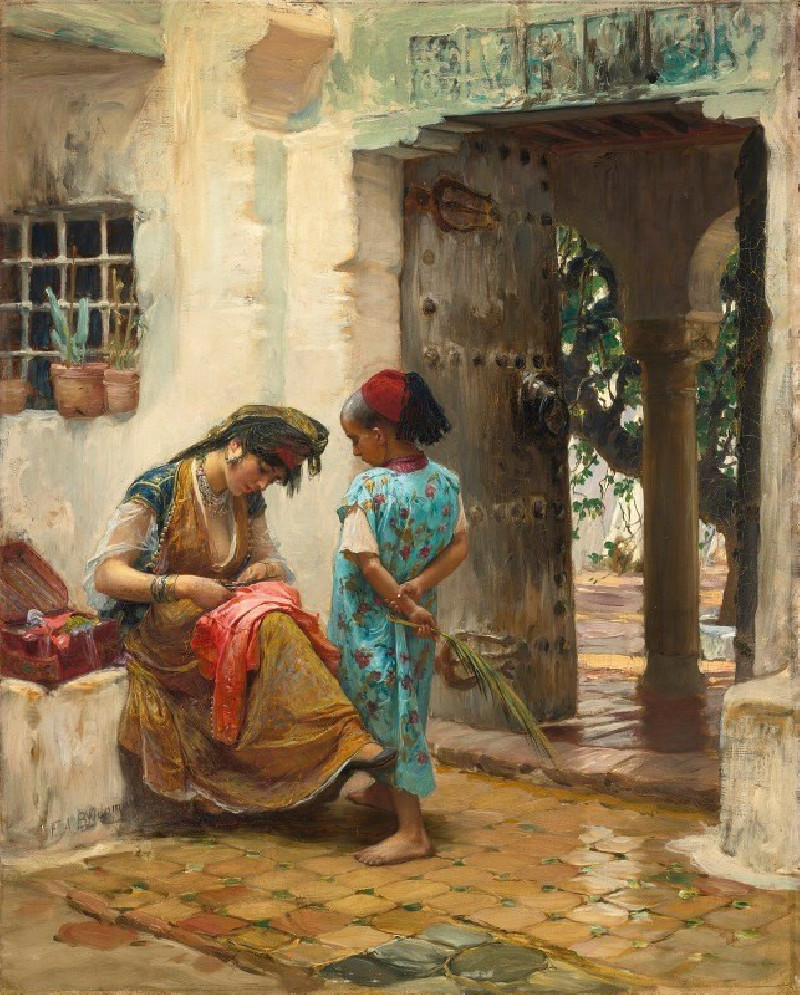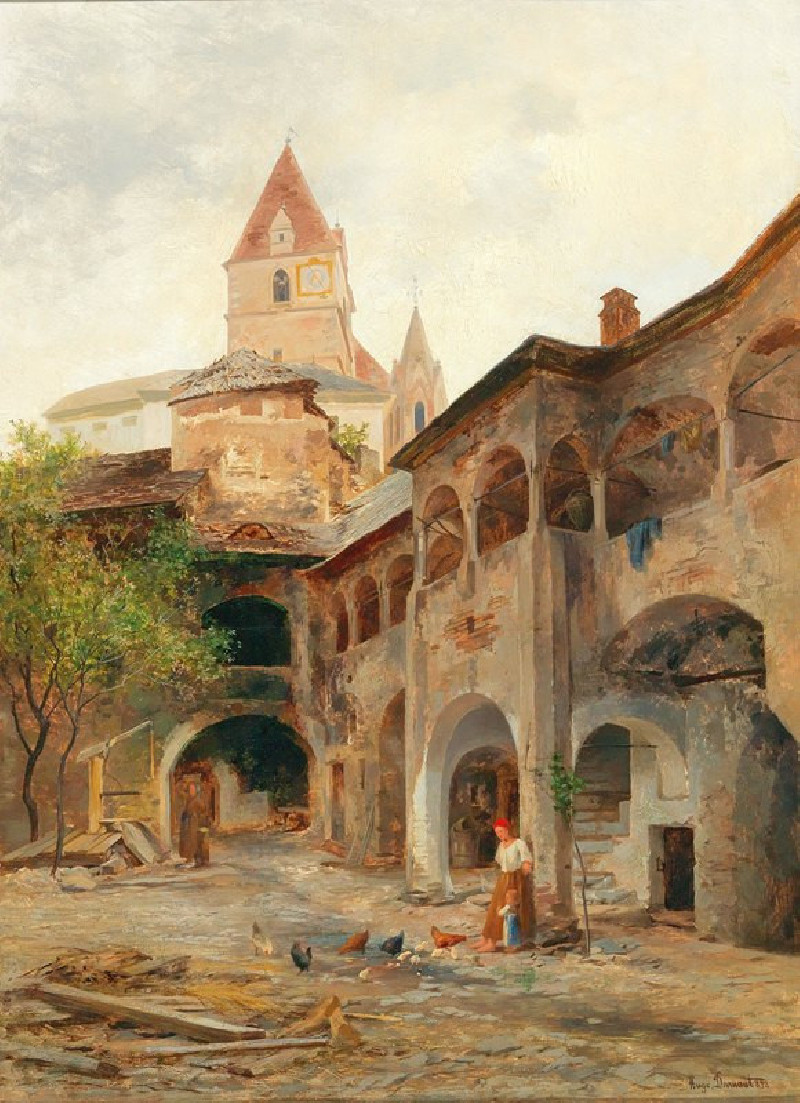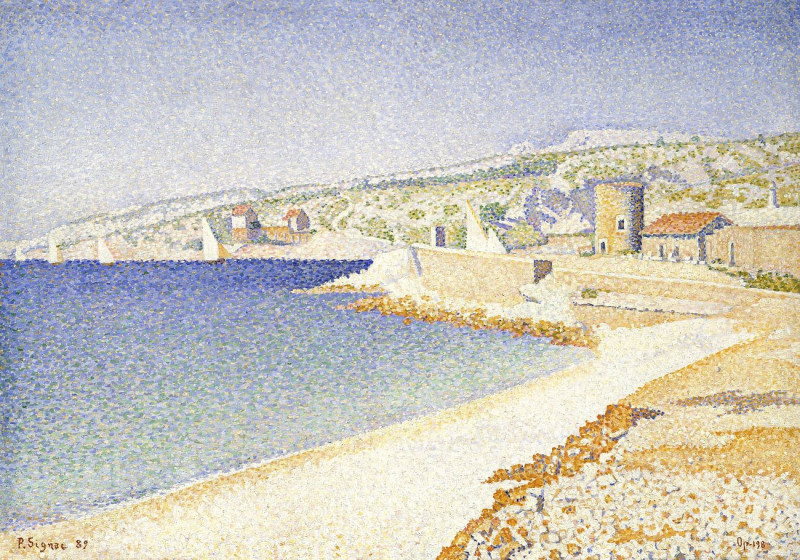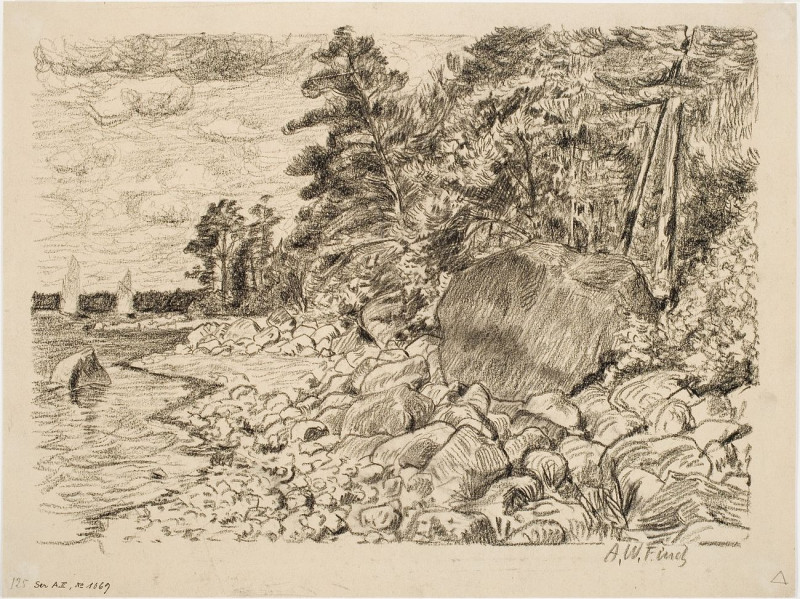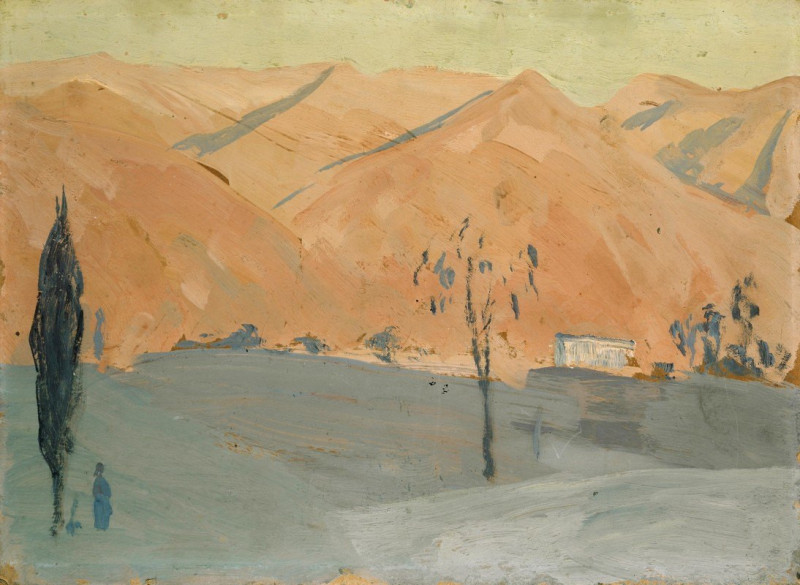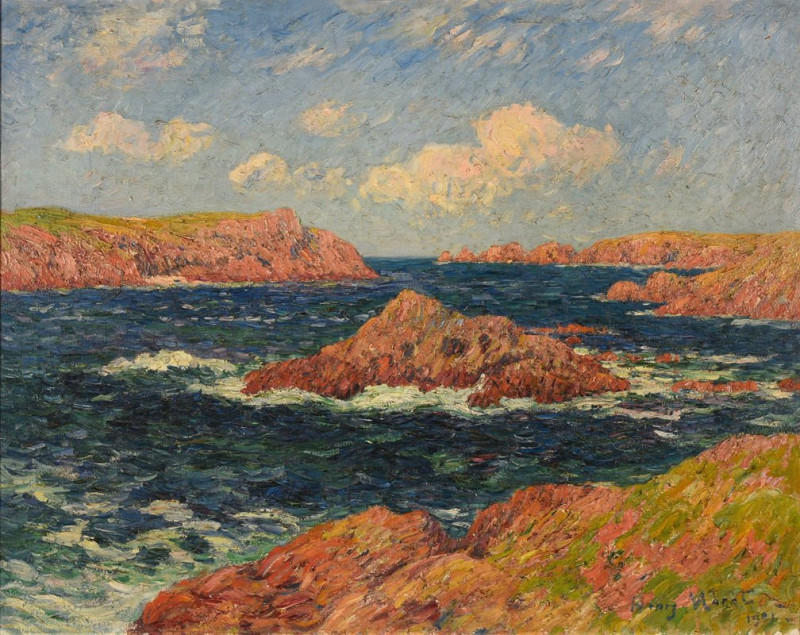From Klones in Vågå, Gudbrandsdalen (1894)
Technique: Giclée quality print
Recommended by our customers
More about this artwork
The painting titled "From Klones in Vågå, Gudbrandsdalen" by Thorvald Erichsen, painted in 1894, presents a serene and contemplative nocturnal landscape that encapsulates the tranquil beauty of Norway's natural environment. The composition is dominated by a series of dark, towering conifer trees in the foreground that form a striking silhouette against the dusky skies. These trees, aligned upright and closely packed, guard the scene and lead the viewer's eye toward the overlapping mountains gently receding into the distance.Erichsen effectively employs muted shades of green, blue, and black to create a moody and atmospheric depiction of the terrain in Gudbrandsdalen, a well-known valley in Norway. The lower fields and gentle slopes, subtly illuminated by what could be the faint glow of moonlight, contrast with the darker tones of the foreground and the deep shadows among the trees.Strikingly, Erichsen's use of minimal light and dark contrasts achieves a dramatic yet understated depiction of the natural landscape. This work exemplifies his skill in balancing color and form to evoke mood and a deep sense of place. The peaceful coexistence of shadow and light suggests not just the time of day, but also evokes a timeless, almost mystical quality to the scenery, inviting viewers to reflect on the beauty and depth of nature’s quiet moments.
Delivery
Returns
Thorvald Erichsen was a Norwegian Post-Impressionist painter; primarily known for landscapes and still lifes.
Thorvald Erichsen was born in Trondheim, Norway. He was the son of Ernst Erichsen (1820-1869) and Trine Jensine Rian (1829-1884). Erichsen's father was a confectioner and died when Erichsen was very young.
Although at first he wanted to be a pianist, in 1886 he began studying law, then dropped out and attended a painting school run by Knud Bergslien, where he completed a course in arts and crafts. He later moved to Copenhagen, where he became a student of Christian Zahrtmann, who had a greater influence on his artistic development.

